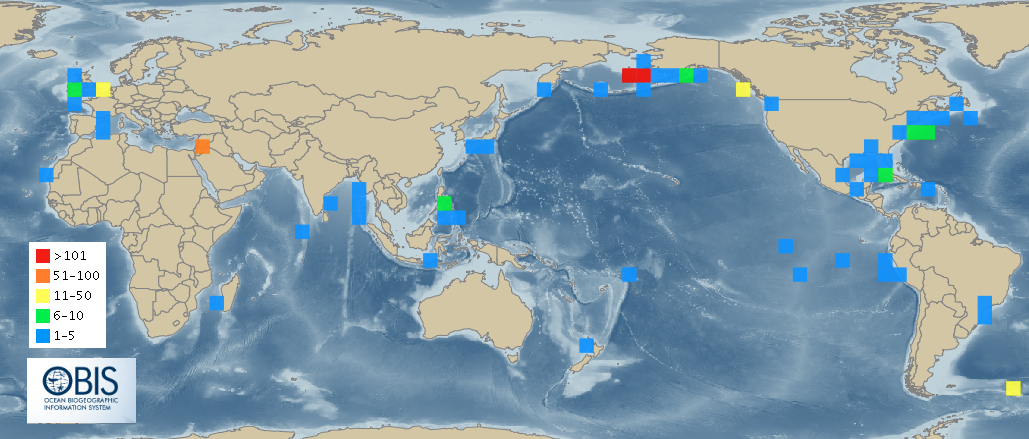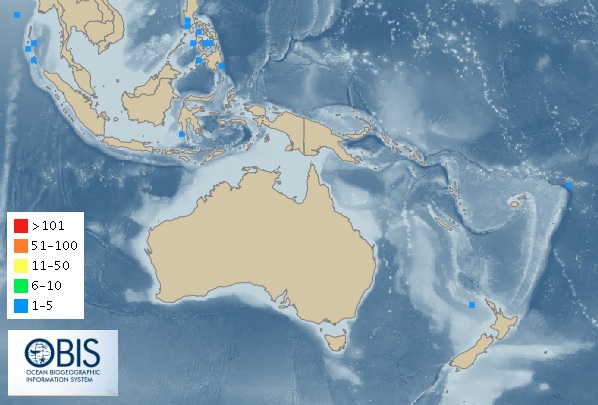Overview
Introduction
Economic Importance
Physical Description
Size
Ecology
Local Occurrence
Global Distribution
Crypsis
Life History & Behaviour
Life Cycle & Reproduction
Locomotion
Feeding (Report)
Anatomy & Physiology
Nervous System
Musculature
Respiration, Circulation & Excretion
Evolution & Systematics
Systematics
Conservation & Threats
Conservation
Threats
References |
GLOBAL DISTRIBUTION
Species in the genus Aequorea are found worldwide in both tropical and temperate waters. However, they are absent from polar waters.

Figure 3.3: The global distribution of all species within the genus Aequorea. Sourced from Ocean Biogeographic Information System. |
It is evident from Figure 3.4, that while there are species of Aequorea found in the waters surrounding Australia, there are none along the eastern coast of Australia.

Figure 3.4: The distribution of species within the genus Aequorea in the Australian region. Sourced from Ocean Biogeographic Information System.
|
This lack of Aequorea species along the eastern coast of Australia does not mean that there are none present at all. It simply means that there is a lack of data within the area. This could be due to the fact that there is little scientific interest in the genus in these waters. It could also be largely due to the difficulty of collecting them with regular sampling materials (Suchman et al., 2012). It is also common knowledge within the scientific community that jellyfish represent trophic dead-ends, meaning that this too could have impacted the lack of interest.
It is completely possible that the genus can be found around Heron Island; they just simply haven't been studied yet.
|
|